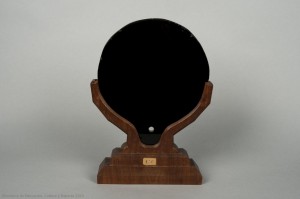Obsidian Mirror – Dora Moutsiou

by Dora Moutsiou
The aesthetic value that obsidian enjoyed in the past reached its apotheosis in the Mesoamerican cultures whose economic and symbolic life it underwrote for ~3000 years. The symbolic importance and authority obsidian attained throughout that period is exemplified by the Aztecs’ respect towards their patron god Tezcatlipoca, Lord of the Smoking Mirror. Tezcatlipoca’ s eponymous possession, the obsidian mirror, was a metaphor for rulership and power. Obsidian’s unequalled utility generated an enduring Mesoamerican aesthetic, unique in its capacity to create social relationships and stimulate symbolic connections.
Reading
Heyden, D. 1988, Black Magic: obsidian in symbolism and metaphor, in J. K. Josser and& K. Dakin (eds) Smoke and mist: Mesoamerican studies in memory of Thelma D. Sullivan. Oxford, British Archaeological Reports International Series 402: 217-236.
Saunders, N.J. 2001, A dark light: reflections on obsidian in Mesoamerica, World Archaeology 33: 220-236.
